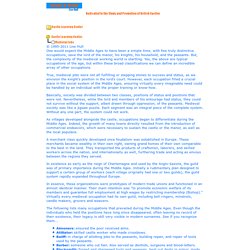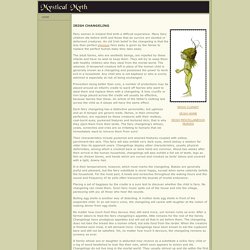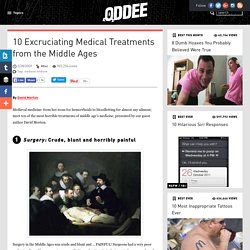

Medieval Porter by Andy Cadely on Prezi. 5 Common jobs during the medieval Era. Medieval Jobs. © 1995-2011 Lise Hull One would expect the Middle Ages to have been a simple time, with few truly distinctive occupations, save the lord of the manor, his knights, his household, and the peasants.

But, the complexity of the medieval working world is startling. Yes, the above are typical occupations of the age, but within these broad classifications we can define an incredible array of other occupations. True, medieval jobs were not all fulfilling or stepping stones to success and status, as we envision the knight's position in the lord's court. However, each occupation filled a crucial place in the social system of the Middle Ages, ensuring virtually every imaginable need could be handled by an individual with the proper training or know-how. Basically, society was divided between two classes, positions of status and positions that were not.
As villages developed alongside the castle, occupations began to differentiate during the Middle Ages. Almoners: ensured the poor received alms. Mystical Mythology from around the world. Their characteristics include puckered and wizened features coupled with yellow, parchment-like skin.

This fairy will also exhibit very dark eyes, which betray a wisdom far older than its apparent years. Changelings display other characteristics, usually physical deformities, among which a crooked back or lame hand are common. About two weeks after their arrival in the human household, changelings will also exhibit a full set of teeth, legs as thin as chicken bones, and hands which are curved and crooked as birds' talons and covered with a light, downy hair. It is their temperament, however, which most marks the changeling. Babies are generally joyful and pleasant, but the fairy substitute is never happy, except when some calamity befalls the household.
Placing a set of bagpipes by the cradle is a sure test to discover whether the child is fairy. Boiling egg shells is another way of detecting. No matter how much food they devour, they still want more, yet remain runty as ever. Health and Medicine in Medieval England. Health and medicine in Medieval England were very important aspects of life.

For many peasants in Medieval England, disease and poor health were part of their daily life and medicines were both basic and often useless. Towns and cities were filthy and knowledge of hygiene was non-existent. The Black Death was to kill two thirds of England’s population between 1348 and 1350. In 1349, Edward III complained to the Lord Mayor of London that the streets of the city were filthy: No one knew what caused diseases then.
Other theories put forward for diseases included “humours”. Astronomers blamed the planets going out of line As important, no-one knew how diseases spread – the fact that people lived so close together in both villages and towns meant that contagious diseases could be rampant when they appeared; as happened with the Black Death. Physicians were seen as skilled people but their work was based on a very poor knowledge of the human anatomy. Operations were carried out by ‘surgeons’. 10 Excruciating Medical Treatments from the Middle Ages (medieval medicine) By David Morton Medieval medicine: from hot irons for hemorrhoids to bloodletting for almost any ailment; meet ten of the most horrible treatments of middle age's medicine, presented by our guest author David Morton.

Surgery: Crude, blunt and horribly painful Surgery in the Middle Ages was crude and blunt and … PAINFUL! Surgeons had a very poor understanding of human anatomy, anesthetics and antiseptic techniques to keep wounds and incisions from infection. It was not a pleasant time to be a patient, but if you valued your life, there was no choice. But there were some great successes.
Dwale: A crude anesthetic that could cause death in itself Surgery in the Middle Ages was really only used in life/death circumstances. The Middle English word used to describe an anesthetic potion was "dwale" (pronounced dwaluh). The hemlock juice alone could easily have caused death. Paracelsus, a medieval Swiss physician, was the first to use ether for its anesthetic qualities. 10 Completely Uncanny Superstitions From The Middle Ages. Weird Stuff In the pre-scientific Middle Ages, the world was at the same time both fascinating and frightening.

In the absence of proper knowledge, people had no choice but to fall back on their own imaginations to make sense of the myriad natural phenomena around them. The result was a world where everything seemed magical, a place teeming with angels and demons, fairies and goblins, elves, gnomes, and witches. This list takes us inside the medieval mind and the fears and superstitions through which it tried to explain the world. 10 The Sea In The Sky For this story, we are indebted to English chronicler Gervase of Tilbury and his work Otia Imperiala.
For proof, Gervase offers an episode that took place in an English village. Another tale concerns a merchant who accidentally dropped his knife while out at sea. 9 Omens Of Charlemagne’s Death The Frankish king Charlemagne was crowned Holy Roman Emperor in A.D. 800. 8 Magonia 7 Changelings.